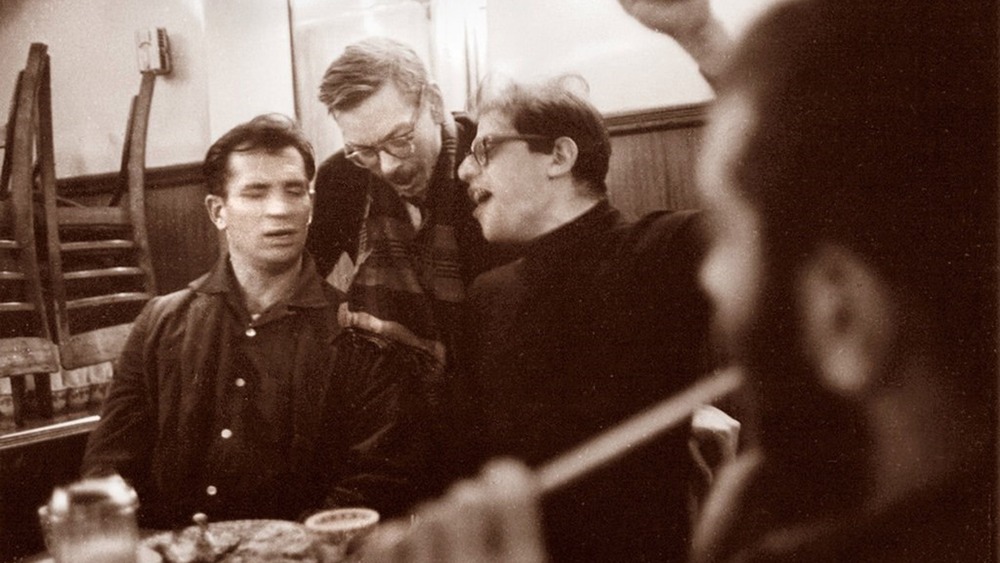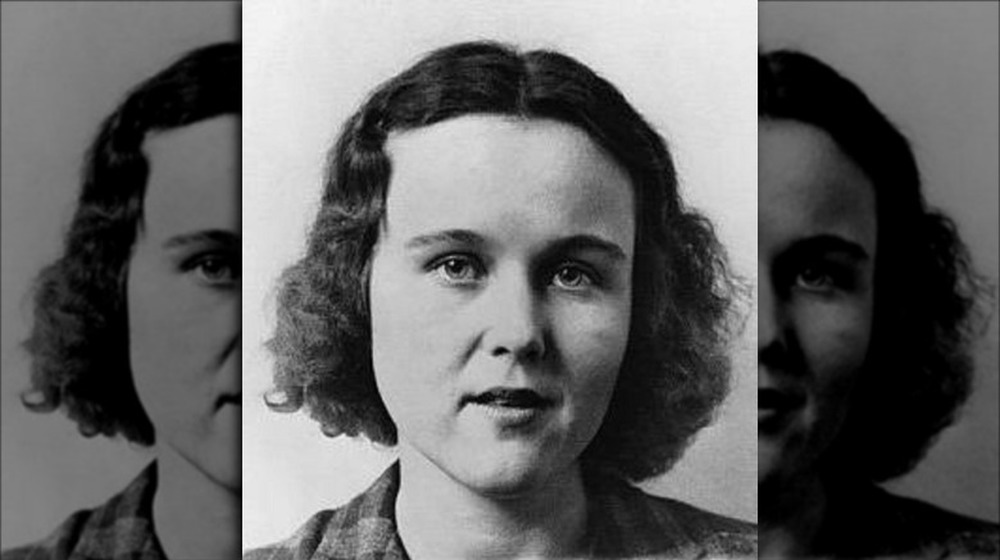The Party Trick That Tragically Killed The Beat Generation's Muse
"Those who cannot or will not mind their own business cling to the victimless-crime concept, equating drug use and private sexual behavior with robbery and murder."
Those words, written by Beat author William S. Burroughs in 1983's The Place of Dead Roads, typify the ethics of the Beat generation – "you do you, hipster" – and ironically act as a mild, indirect ex post facto exoneration of Burroughs' own 30-year prior murder of said generation's muse.
At the time of the crime, 1950s America was a place of economic booms, the rise of suburbia and the U.S.' obsessive car culture, the sculpting of so-called "traditional" family values (you know, smiling wives in black-and-white ads cooking dinner while wearing flower-print dresses), and a countercultural movement that leveraged it all into a jazzy, funky, druggy refutation of convention: the Beat movement. Springing from the coasts, as Britannica reminds us — San Francisco, Los Angeles, and New York, particularly — the self-stylized "Beats" were a cadre of avant-garde artists, philosophizers and writers such as Allen Ginsberg ("Howl" is his most well-known poem, listenable on YouTube), Jack Kerouac (a free reading of his novel On the Road is on YouTube), and yes, William S. Burroughs, who has also been credited with pioneering a language style adopted by writers of cyberpunk, per DePauw University.
And these three men? They were entangled in a network of relationships centered around Joan Vollmer, "patron and muse" of the Beats, per All That's Interesting.
Killed during a game of 'William Tell'
In Beatdom, David Willis cites Brenda Knight's Women of the Beat Generation, who wrote of Vollmer, "Her apartment was a nucleus that attracted many of the characters who played a vital role in the formation of the Beats. Brilliant and well versed in philosophy and literature, Joan was the whetstone against which the main Beat writers — Allen, Jack, and Bill — sharpened their intellect." Their discussions, hangs-outs, and yes, prolific drug use (she preferred the amphetamine Benzedrine; Burroughs, heroin) provided "the fires that stoked the Beat engine" from Vollmer's Upper West Side apartment in Manhattan.
Burroughs described Vollmer as, "A very extraordinary woman... she was the smartest person around... She had an immediate insight into anyone's character. Just one look and she knew." In fact, he wound up becoming Vollmer's common-law husband even though he was openly gay, because of what Ginsberg described as "telepathic soulmates." Ginsberg, in fact, urged them to get together, per the New Yorker.
Eventually, the couple ended in tragedy. In 1946, Vollmer wound up in Bellevue Hospital due to drug use, and Burroughs was arrested for forging prescriptions. Over the next five years they moved from New York to Texas to New Orleans to Mexico City. There, in 1951 when playing a party game of "William Tell," Burroughs took aim at a glass on Vollmer's head and shot her in the forehead. Burroughs was released on bail, fled to the U.S., and was convicted of manslaughter in absentia by the Mexican authorities.

